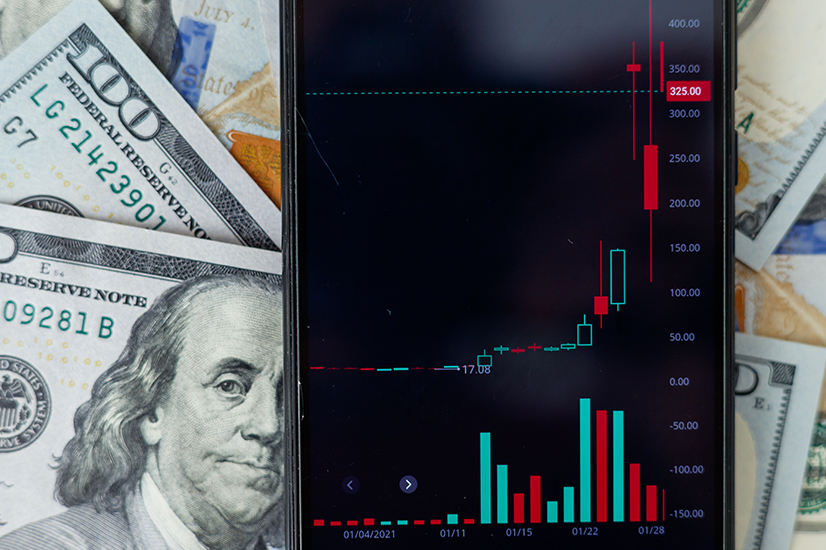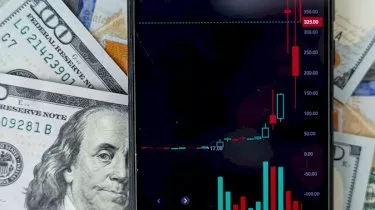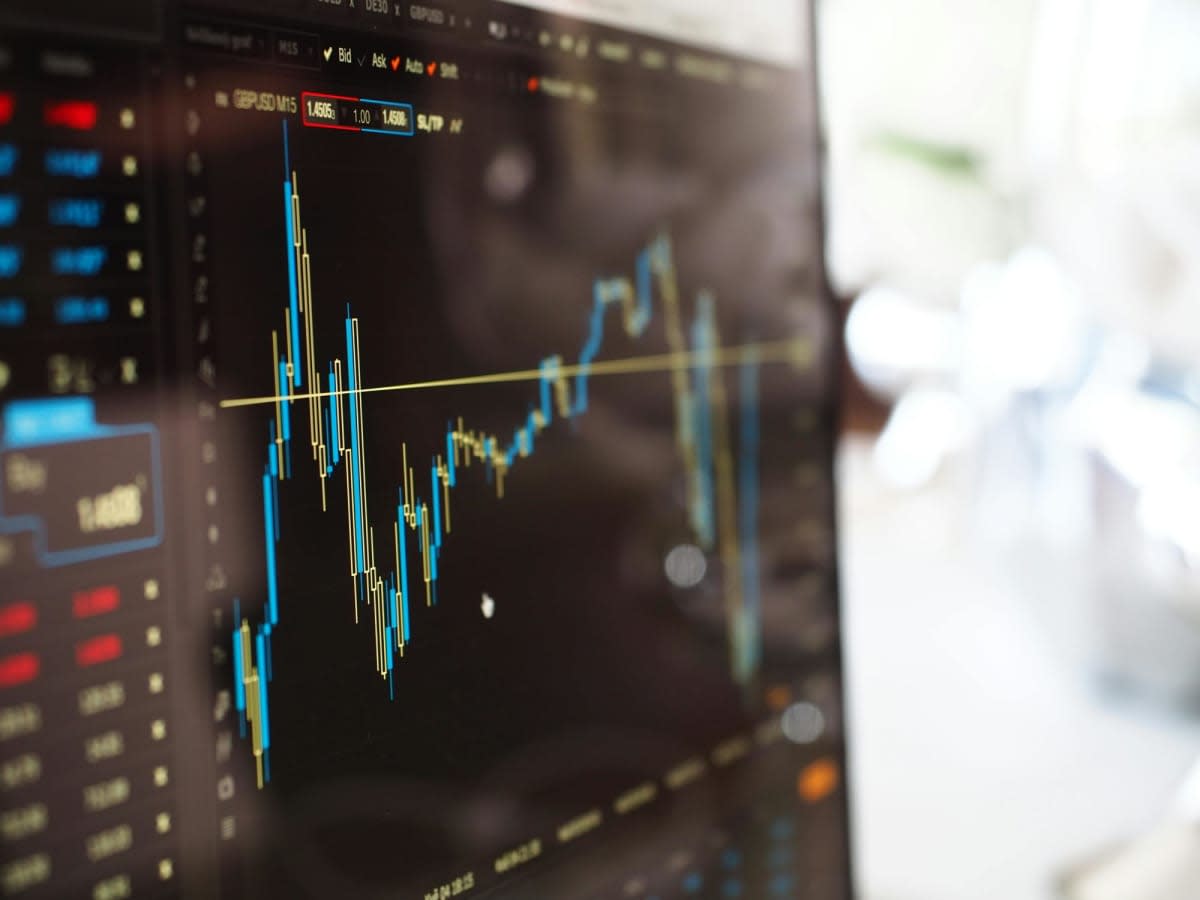Invest
What is a short squeeze?
Volatile stock price movements, such as that of US video-game retailer GameStop and entertainment company AMC, have captured the attention of both market spectators and international audiences. The surge in prices in the basket of stocks is brought about by a short squeeze and its options-related cousin, the gamma squeeze.
What is a short squeeze?
Volatile stock price movements, such as that of US video-game retailer GameStop and entertainment company AMC, have captured the attention of both market spectators and international audiences. The surge in prices in the basket of stocks is brought about by a short squeeze and its options-related cousin, the gamma squeeze.

What does a short squeeze mean? Let’s look further into this sharemarket phenomenon, and the short selling that fuels it.
A short squeeze occurs when a stock that is heavily shorted receives positive news or a new catalyst that brings in a lot of new buyers to the stock. Short sellers (who have betted against the stock) rush to hedge their positions in the event of an adverse price movement to cover their losses.
This causes a sharp increase in demand for the stock, or a short squeeze, and consequently drives up share prices.
How does a short squeeze happen?
Before we understand how a short squeeze occurs, we must be familiar with the trading concept of short selling.

Shorting or short selling is when an investor places a bet that the price of stock will decline. They do this by borrowing shares of the asset that they believe will drop in price (usually from a broker or from another investor) and sell them.
If they are right, they buy the sold shares back later at a lower price point. The borrowed shares are then returned to the lender, plus interest. Investors make a profit by pocketing the difference between the sell price and buy price.
But what happens when they’re wrong? After all, speculation is an important factor when trading shares. An unexpected piece of favorable news (such as a positive forecast, a product announcement, or an earnings beat that excites the interest of buyers) can easily cause a rise in the stock’s share price.
In some instances, the rally in the stock may prove to be a temporary fluke. But if it’s not, short sellers have to act fast as short sales have an expiration date. So, when a stock unexpectedly rises in price, they have to move to cover their losses.
That’s where the short squeeze comes in. In the event that a shorted stock rises in price, short-sellers are forced to buy at a higher price point and pay the difference between the price set and its sale price to cover their losses.
This buying can turn into a feedback loop. Demand for the shares builds up buying pressure, which pushes the stock higher, causing even more short-sellers to buy back or cover their positions. A short squeeze happens when there is a lack of supply and an excess of demand for the stock due to short-sellers covering their positions by purchasing large volumes of stock relative to the market volume.
What stocks are prone to a short squeeze?
Stocks with a low volume of traded shares, with small market capitalisation and small floats are more likely to experience short squeezes. But market squeezes can also involve large stocks with massive market capitalisations.
Short squeezes are also more likely to happen when a significant percentage of a stock’s float is short and a large portion of the stock is held by long-term investors.
A short squeeze can occur when the demand from short-sellers exceeds the supply of shares to borrow, which leads to the failure of borrow requests from prime brokers. This scenario often happens with firms that are on the brink of filing bankruptcy.
Expensive borrow rates on stocks can also facilitate a short squeeze. The high borrow rates can heighten the pressure on short sellers to cover their position.
How does a short squeeze end?
Short squeezes typically don’t last long. This is because the rise in the stock price tends to be because of short-term technical factors than long-term fundamentals of the company. As seen in the GameStop short squeeze, the increase in prices are usually powered by human behaviour and technical factors.
This means that at some point, people will stop buying shares and lock in the gains. When all of the weak shorts are margined out of their position and the conditions for the short squeeze dissipates, the force buying also ends. This leads the stock price to crash back down to earth.
When a short squeeze eventually loses steam, the stock price usually declines by 50 per cent within the next three to four days.
Get all the latest news, analyses, and updates about the stock market. nestegg will provide you with expert financial advice and special features on how to invest wisely, which companies are performing well, and other information that will help you turn your investment strategy into a success.

Stock market
6K Additive secures A$48 million through initial public offering on the Australian Stock Exchange
6K Additive, a prominent player in the advanced metal powders and alloy additions market, has made a significant stride by successfully completing its Initial Public Offering (IPO) on the Australian ...Read more

Stock market
Institutional investors increase stock allocations to 18-year high amid cautious market shifts
In a recent development, State Street Markets unveiled the findings of its latest State Street Institutional Investor Indicators, revealing intriguing shifts in institutional investor behaviourRead more

Stock market
FOREX.com launches in Australia to empower self-directed traders
StoneX Group Inc. (NASDAQ: SNEX) has announced the Australian launch of FOREX.com, expanding access for self-directed traders to a global suite of Contracts for Difference (CFD) products across ...Read more

Stock market
Westpac and CMC Markets strengthen partnership to enhance online trading services
In a significant move that underscores the evolving landscape of online trading in Australia, CMC Markets Stockbroking has been chosen as the preferred vendor by Westpac Banking Corporation to extend ...Read more

Stock market
Portfolio reviews as an operating discipline: turning volatility into a competitive edge
In a higher-rate, higher-volatility world, portfolio reviews are no longer an annual hygiene task; they’re a core operating rhythm that protects cash flow, unlocks tax alpha, and sharpens risk ...Read more

Stock market
Fee war on the ASX: Global X’s A300 turns up the heat on core Aussie equity ETFs
Global X has lobbed a 0.04% management fee into Australia’s core equity sandbox, launching the Australia 300 ETF (A300) to take on entrenched giants. Read more

Stock market
Challenger IM shakes up the ASX with private credit note and a side of risk
Challenger Investment Management has taken private credit mainstream with an ASX-listed note structure—LiFTs—that secured roughly $100 million in cornerstone commitments within a day of launch. Read more

Stock market
International stocks: Diversifying your portfolio beyond Australia
In an increasingly globalized market, Australian investors have the opportunity to enhance their investment portfolio by incorporating international stocks. Diversifying your investments globally can ...Read more

Stock market
6K Additive secures A$48 million through initial public offering on the Australian Stock Exchange
6K Additive, a prominent player in the advanced metal powders and alloy additions market, has made a significant stride by successfully completing its Initial Public Offering (IPO) on the Australian ...Read more

Stock market
Institutional investors increase stock allocations to 18-year high amid cautious market shifts
In a recent development, State Street Markets unveiled the findings of its latest State Street Institutional Investor Indicators, revealing intriguing shifts in institutional investor behaviourRead more

Stock market
FOREX.com launches in Australia to empower self-directed traders
StoneX Group Inc. (NASDAQ: SNEX) has announced the Australian launch of FOREX.com, expanding access for self-directed traders to a global suite of Contracts for Difference (CFD) products across ...Read more

Stock market
Westpac and CMC Markets strengthen partnership to enhance online trading services
In a significant move that underscores the evolving landscape of online trading in Australia, CMC Markets Stockbroking has been chosen as the preferred vendor by Westpac Banking Corporation to extend ...Read more

Stock market
Portfolio reviews as an operating discipline: turning volatility into a competitive edge
In a higher-rate, higher-volatility world, portfolio reviews are no longer an annual hygiene task; they’re a core operating rhythm that protects cash flow, unlocks tax alpha, and sharpens risk ...Read more

Stock market
Fee war on the ASX: Global X’s A300 turns up the heat on core Aussie equity ETFs
Global X has lobbed a 0.04% management fee into Australia’s core equity sandbox, launching the Australia 300 ETF (A300) to take on entrenched giants. Read more

Stock market
Challenger IM shakes up the ASX with private credit note and a side of risk
Challenger Investment Management has taken private credit mainstream with an ASX-listed note structure—LiFTs—that secured roughly $100 million in cornerstone commitments within a day of launch. Read more

Stock market
International stocks: Diversifying your portfolio beyond Australia
In an increasingly globalized market, Australian investors have the opportunity to enhance their investment portfolio by incorporating international stocks. Diversifying your investments globally can ...Read more








